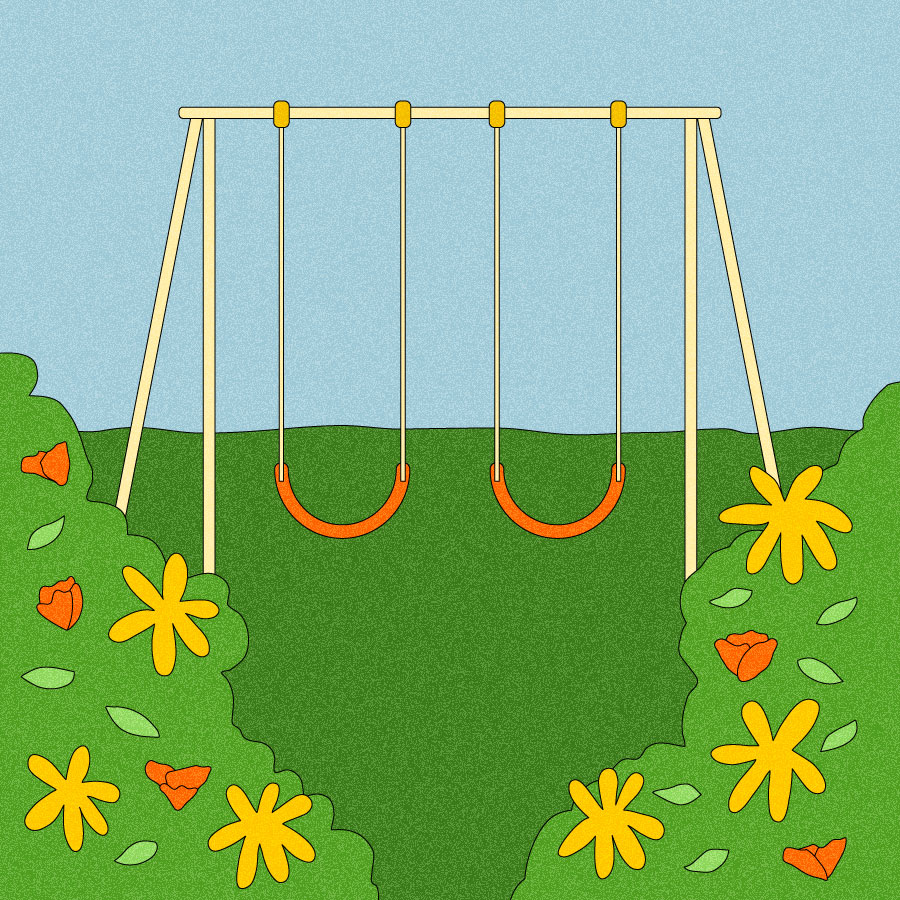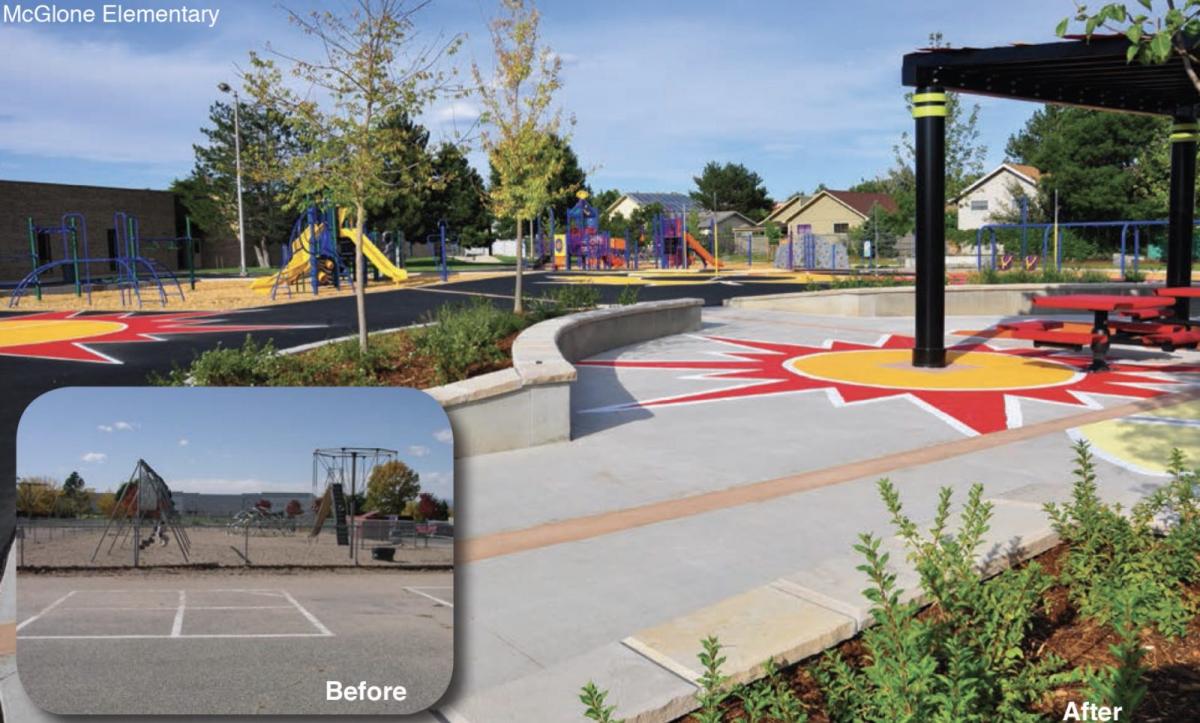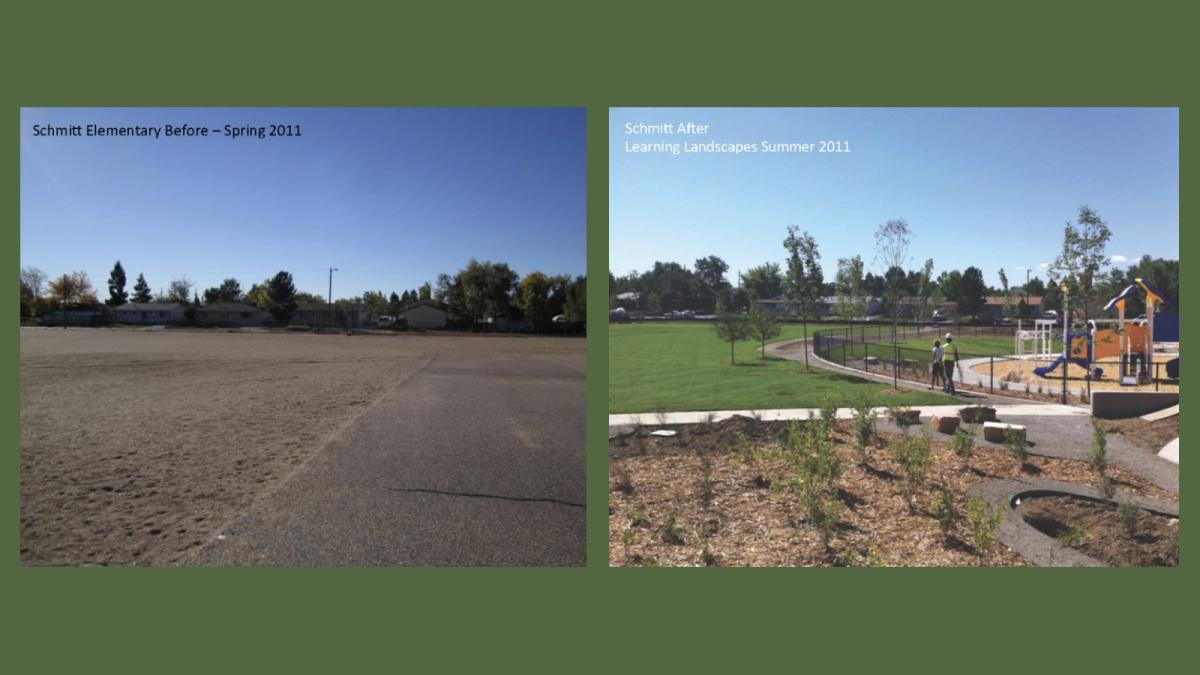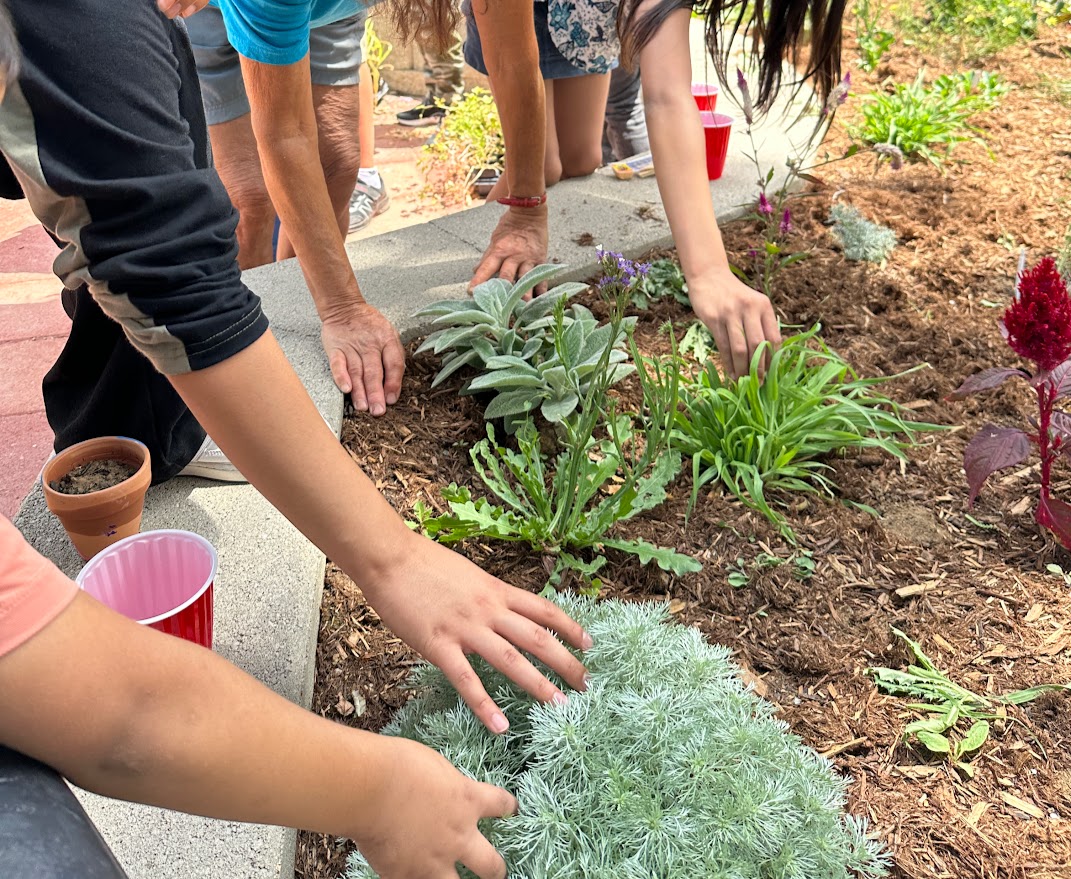
The spotlight
When Lois Brink’s kids were in elementary school, she remembers being struck by how uninviting their schoolyard was. She described it as “scorched earth” — little more than a dirt field coated in “I don’t know how many decades of weed retardant” and some aging play equipment. But Brink, a landscape architect and professor at the University of Colorado Denver, didn’t just see a problem. She saw fertile ground for a solution. Over the next dozen years, she helped lead a transformation of nearly 100 elementary school grounds across Denver into more vibrant, greener spaces, dubbed “Learning Landscapes.”
Public schools alone cover about 2 million acres of land in the U.S. Although comprehensive data is hard to come by, the “scorched earth” that Brink witnessed is the norm in many places — according to the Trust for Public Land, around 36 percent of the nation’s public school students attend school in what would be considered a heat island. And as with green spaces writ large, a dearth of schoolyard trees and other vegetation tends to be most common in lower-income areas and Black and brown neighborhoods.
“It really makes sense to think about how those spaces can serve well-being, development, learning, and social cohesion — and also environmental justice and resilience goals that can help a community thrive,” said Priya Cook, director of green schoolyards and communities at Children & Nature Network, one organization working to advance this goal. The org recently published a report looking at how the benefits of green schoolyards translate into economic value, focusing on Denver as a case study and using data from Brink’s work.

A before-and-after image of McGlone Elementary in Denver, one of the Learning Landscapes schools. Courtesy of Lois Brink
Incorporating factors such as school attendance and academic scores, carbon sequestration and rainwater retention, and overall community health and public safety, the report estimated that communities can reap a more than $3 return for every $1 invested in green schoolyards.
In Denver, Learning Landscapes schools saw increases in math and writing scores and overall school performance (a measure combining factors such as academic scores and graduation, dropout, and participation rates). And although this research is not definitive, the study stated that “if green schoolyards can improve student achievement in elementary school, they likely have a positive impact on high school graduation rates.” That in turn cascades into improved employment outcomes, and increased tax revenue. The study also concluded that benefits are amplified if green schoolyards are made available to the public. For instance, previous research has shown that property values increase by as much as 5 percent when the properties are within 500 feet of a park.
For Cook, translating the benefits of greening schoolyards into a monetary value is about more than helping schools think about how to spend their limited budgets – it’s about opening up new avenues of funding. “School districts are notoriously underfunded,” Cook noted. “And this is a strategy that benefits all of society. And so the financing needs to come from organizations in community development, economic development, public health — these sectors that are thinking about the whole child, whole community, society-level outcomes.”
![]()
After Brink’s aha moment at her own kids’ school, she decided to get her graduate students at the university involved in designing a better alternative. Realizing the school district didn’t have money to implement their vision, they raised the funds themselves to install a pilot at Bromwell Elementary, the school her kids attended. “Then we realized, when you raise the money for something, the district is much more willing to maybe do things nontraditional and rethink what a schoolyard could look like as a civic space,” Brink said.
That approach got the school district on board for expanding the initiative to other schools. In 2000, Brink formed the Learning Landscape alliance, a public-private partnership with support from the city, local nonprofits, and contractors that were willing to donate pro bono services to keep costs down. Over the next three years, they worked with communities to design and convert 22 schoolyards in Denver’s industrial crescent.
“What we were trying to convince the district of is that each schoolyard needs to be a total transformation,” Brink said. Each project was unique, both in its design and in the process it took to implement it. For instance, Brink recalls at one school, many of the parents happened to work in the landscape industry, so they volunteered their time alongside the contractors, laying irrigation and sod. At another school that primarily served Latino students, Brink said, the team designed raised planters that mimicked Aztec geometry.
In 2003, and then again in 2008, the Denver Public School Board proposed, and citywide voters passed, a ballot measure to set aside funding to expand the conversions throughout the city. “You had a city where 60 percent of the voters didn’t have children. And yet this passed overwhelmingly every time,” Brink said. “It was just really, really great to see that sort of level of engagement.”

Before-and-after pictures from Schmitt Elementary school in 2011. Courtesy of Lois Brink
All told, between 2000 and 2012, the Learning Landscapes initiative converted every single public elementary school campus in Denver to a green schoolyard, totaling 306 acres.
And all the while, Brink has been collecting data. In December of last year, she prepared a report for Children & Nature Network analyzing some of the key takeaways from Learning Landscapes (that formed the basis of its study on the economic benefits of green schoolyards more broadly). Among other impacts, the report noted a 7 percent reduction in student mobility (the rate at which students transfer in and out of a school), a $1.3 million boost in state funding thanks to increased student enrollment, and 1,284 tons of carbon sequestered each year across all the green schoolyards.
![]()
With all the benefits of green schoolyards, for students, communities, and the environment, it may seem like a no-brainer solution. Still, there are barriers to converting every single schoolyard into a green space — a vision that Children & Nature Network hopes to help realize by 2050, Priya Cook said.
Cost is one obvious one. But even more than the actual dollars, Cook said, it’s often the initiative it takes to bring together diverse stakeholders to make a project happen — what Brink and her students did when they scrapped together the resources to implement their vision in Denver, through a combination of volunteer labor, pro bono services, and public and nonprofit dollars.
Ironically, Cook noted, a significant barrier to finding the funding for green schoolyards lies in one of their greatest strengths: They’re a multifaceted solution. “Markets tend to underinvest in strategies that produce broad benefits to society,” she said. For instance, if a school, nonprofit, or other funder wanted to make changes to prioritize students’ mental health, it might invest its limited dollars in counseling programs or other targeted interventions, rather than thinking about something like nature access — even though nature access does improve mental health, in addition to other benefits.
“We have to think differently to pick multi-solving interventions,” Cook said.
Still, she’s hopeful that the growing body of research on green schoolyards will continue to bring more stakeholders to the fold.
“I think there’s absolutely more hunger for it,” she said, “and people do it in really ingenious ways. Some places have multimillion dollar investments in a single site, and some places find small grants and they do a lot of surface installations that change kids’ experience every day.”
— Claire Elise Thompson
More exposure
- Read: more about Brink’s work on Learning Landscapes in Denver (CU Denver News)
- Read: about a plan to install green spaces and other improvements at more than 600 schools in Los Angeles (LAist)
- Read: a Q&A about the “equigenic effect” of green schoolyards — how access to nature disproportionately benefits kids who have been the most marginalized (Children & Nature Network)
- Read: an opinion piece advocating for the benefits of turning neglected schoolyards into public parks (MinnPost)
A parting shot
Areti Bushaw, a former student of Brink’s, now runs a nonprofit called ReGeneration Now that helps to manage the garden at Ellis Elementary, one of the most diverse elementary schools in all of Colorado. The garden also serves the broader community, working in particular with the International Rescue Committee, or IRC, a humanitarian aid and refugee resettlement organization, which has an office nearby. Some plots are reserved for resettled families, and the team distributes free produce to newly arrived refugee families as well as students at the school. “We’ve really taken what Learning Landscapes started and built on it,” Bushaw said. In this photo from an activity day with IRC, youth participants were invited to touch and smell “sensory plants.”

This story was originally published by Grist with the headline How greener schoolyards benefit kids — and the whole community on Aug 14, 2024.
This post was originally published on Grist.